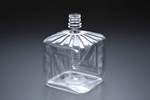PET Preform Hot Runner System Reduces Stack Height
Mold-Masters has cut the stack height of its PET-Series hot runner system from 300 mm to 260 mm, while maintaining a 3-plate design and the advantages therein.
Mold-Masters has optimized the design of its PET-Series hot runner system to reduce its stack height to 260 mm on systems with 72 cavities or less, while using standard components. The prior stack height for a comparable system was 300 mm, according to a company spokesperson. Mold-Masters notes that in most cases more compact stack heights require a two-plate design, but the new PET-Series maintains a three-plate design, which preserves the advantages associated with that configuration. Specifically for PET applications, the benefits of a three-plate design include improved geometric and thermal balancing and reduced plate bowing, which enhance preform quality.
The compact stack height also enables molders to run the system on a wider range of machines, including older generation presses that have stack height limitations. The minimum nozzle pitch of the PET-Series remains the same as regular three-plate designs.
Designed for production of two-stage PET preforms, the Mold-Masters PET-Series is compatible with any major brand of PET preform molds and available in a wide range of industry standard configurations, with custom configurations available upon request.

Mold-Masters has released a new version of its PET Series hot runner system with a lower stack height and a three-plate design. Source: Mold-Masters
Related Content
-
How to Design Three-Plate Molds, Part 1
There are many things to consider, and paying attention to the details can help avoid machine downtime and higher maintenance costs, and keep the customer happy.
-
How to Reduce Sinks in Injection Molding
Modifications to the common core pin can be a simple solution, but don’t expect all resins to behave the same. Gas assist is also worth a try.
-
Understanding the Effect of Pressure Losses on Injection Molded Parts
The compressibility of plastics as a class of materials means the pressure punched into the machine control and the pressure the melt experiences at the end of fill within the mold will be very different. What does this difference mean for process consistency and part quality?













